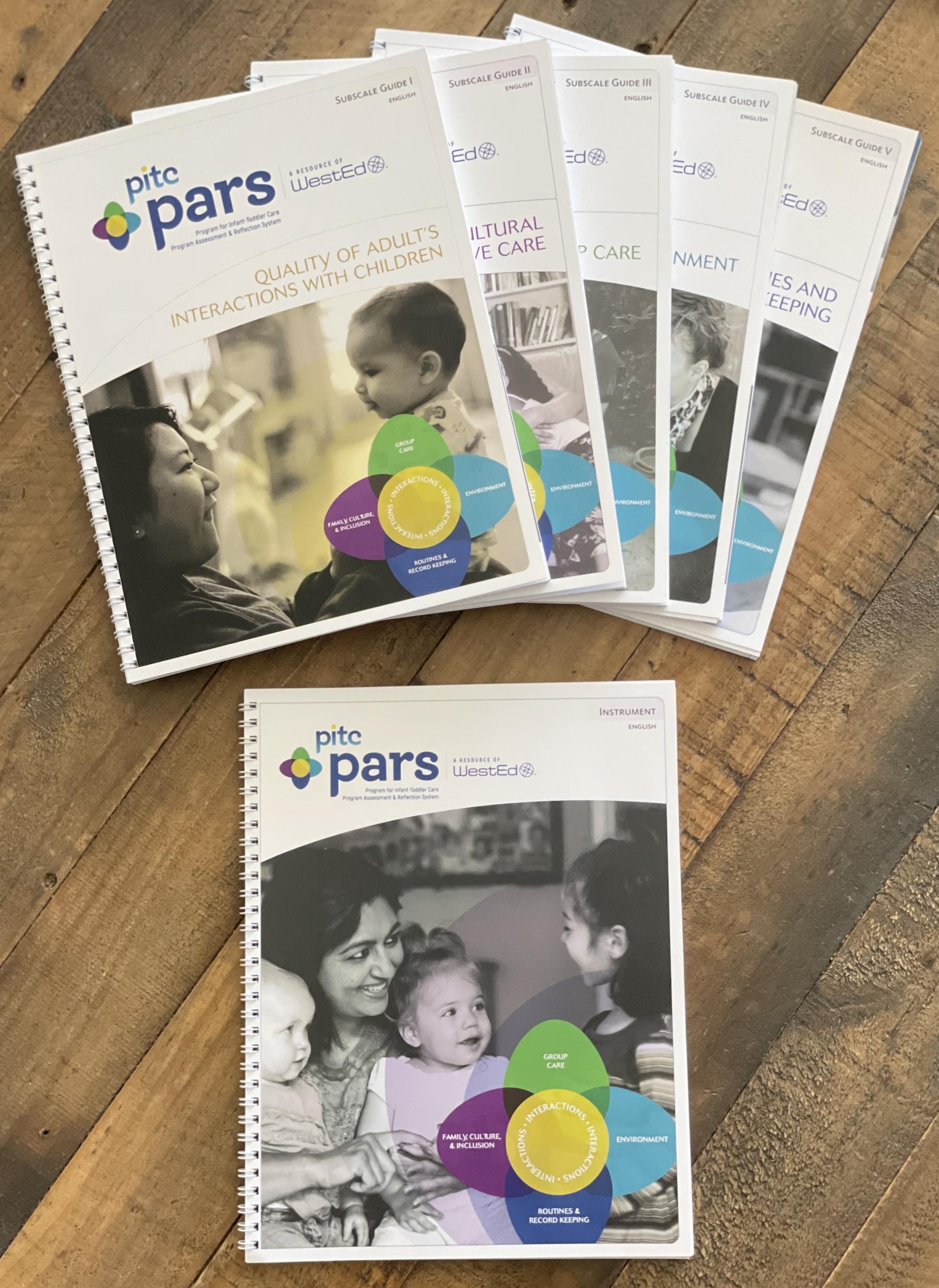PITC PARS Informational Webinar
Presented by Peter Mangione, Kerry Kriener-Althen, and Gabriela López
Learn about the Program for Infant/Toddler Care (PITC) Program Assessment and Reflection System (PARS). This resource supports observation, documentation, and reflection on the quality of care for infants and toddlers in family child care and center-based settings.
Watch the PITC PARS Informational Webinar Now
In this webinar recording from May 2024, you will learn about the origins of the PITC PARS and how family child care providers, infant/toddler care program staff, coaches, and others can use this tool to support quality care for children birth to 3-years old.
Observe, Document, and Reflect on the Essential Aspects of High-Quality Infant/Toddler Care
The PITC PARS Instrument is a tool used to observe essential components of infant/toddler group care—from caregiving interactions to the physical environment to program policies and administrative structures. The instrument enables observers to determine the extent to which family child care and center-based programs promote responsive, relationship-based care for infants and toddlers (ages 0–3).
The instrument is designed to recognize the multifaceted nature of quality for infant/toddler care programs. It includes five primary components of child care quality for infants and toddlers to provide a comprehensive look at program quality. These components, or subscales, each consist of various items and sub-items that allow for the assessment of key aspects of the program.
The PITC PARS Instrument is also available in Chinese and Spanish.
NOTE: Instrument Training participants will receive a free copy of the PITC PARS Instrument in the language of the training (English, Spanish, or Chinese) and do not need to purchase it separately.
PITC PARS Subscales
Each of the five Subscale Guides help users of the PITC PARS Instrument become familiar with the specific aspects of quality measured by the sub-items in each of the five respective PITC PARS subscales.
The PITC PARS Subscale Guides provide information about the intent of each sub-item, definitions of key terms, guidance for observing sub-items, and examples that demonstrate the sub-item in action. Together, these elements facilitate in-depth understanding for how to interpret each sub-item, which types of evidence to gather, and how to evaluate the evidence collected.
Subscale I. Quality of Adult’s Interactions with Children is about the responsiveness of individual teachers’ interactions with the infants and toddlers in their care.
Subscale II. Family Partnerships, Cultural Responsiveness, and Inclusive Care is about the extent to which caregiving practices, the care environment, and program policies are responsive to cultural and family practices as well as the unique needs of infants and toddlers.
Subscale III. Organization of Group Care is about the extent to which caregiving practices and program procedures meet infants’ and toddlers’ individual needs through predictable and supportive relationships with one or two care teachers.
Subscale IV. Physical Environment is about the extent to which the program provides indoor and outdoor environments that support infants’ and toddlers’ developmental interests and needs.
Subscale V. Routines and Record Keeping is about the extent to which caregiving routines and program procedures promote infants’ and toddlers’ safety and health.
The PITC PARS Subscale Guides are also available in Chinese and Spanish.
NOTE: Subscale Guide Training participants will receive a free copy of the five PITC PARS Subscale Guides in the language of the training (English, Spanish, or Chinese) and do not need to purchase them separately.
